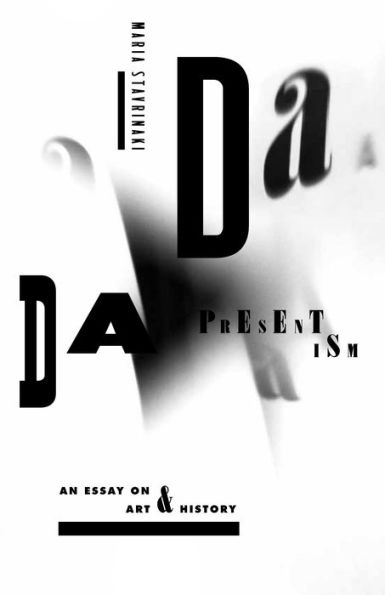Dada Presentism: An Essay on Art and History
Dada is often celebrated for its strategies of shock and opposition, but in Dada Presentism, Maria Stavrinaki provides a new picture of Dada art and writings as a lucid reflection on history and the role of art within it. The original (Berlin-based) Dadaists' acute historical consciousness and their modern experience of time, she contends, anticipated the formulations of major historians such as Reinhart Koselleck and, more recently, François Hartog. The book explores Dada temporalities and concepts of history in works of art, artistic discourse, and in the photographs of the Berlin Dada movement. These photographs—including the famous one of the First International Dada Fair—are presented not as simple, transparent documents, but as formal deployments conforming to a very concrete theory of history. This approach allows Stavrinaki to link Dada to more contemporary artistic movements and practices interested in history and the archive. At the same time, she investigates what seems to be a real oxymoron of the movement: its simultaneous claim to the ephemeral and its compulsive writing of its own history. In this way, Dada Presentism also interrogates the limits between history and fiction.
1123142350
Dada Presentism: An Essay on Art and History
Dada is often celebrated for its strategies of shock and opposition, but in Dada Presentism, Maria Stavrinaki provides a new picture of Dada art and writings as a lucid reflection on history and the role of art within it. The original (Berlin-based) Dadaists' acute historical consciousness and their modern experience of time, she contends, anticipated the formulations of major historians such as Reinhart Koselleck and, more recently, François Hartog. The book explores Dada temporalities and concepts of history in works of art, artistic discourse, and in the photographs of the Berlin Dada movement. These photographs—including the famous one of the First International Dada Fair—are presented not as simple, transparent documents, but as formal deployments conforming to a very concrete theory of history. This approach allows Stavrinaki to link Dada to more contemporary artistic movements and practices interested in history and the archive. At the same time, she investigates what seems to be a real oxymoron of the movement: its simultaneous claim to the ephemeral and its compulsive writing of its own history. In this way, Dada Presentism also interrogates the limits between history and fiction.
90.0
In Stock
5
1

Dada Presentism: An Essay on Art and History
120
Dada Presentism: An Essay on Art and History
120
90.0
In Stock

Product Details
| ISBN-13: | 9780804794244 |
|---|---|
| Publisher: | Stanford University Press |
| Publication date: | 04/20/2016 |
| Pages: | 120 |
| Product dimensions: | 5.50(w) x 8.50(h) x 0.50(d) |
About the Author
From the B&N Reads Blog
